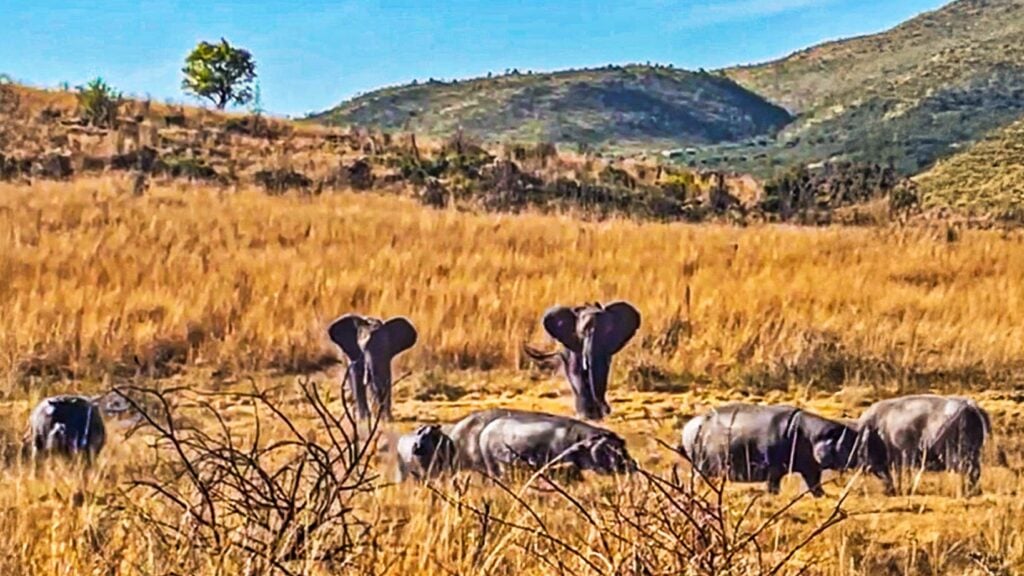
Zane Kruger filmed this encounter at Pilanesberg National Park’s Lengau Dam and sent it to Latest Sightings.
Hippos out grazing
In this short clip, we are met with the sight of a family of hippos grazing on the shore of the dam. A pair of elephants is seen approaching from the background.
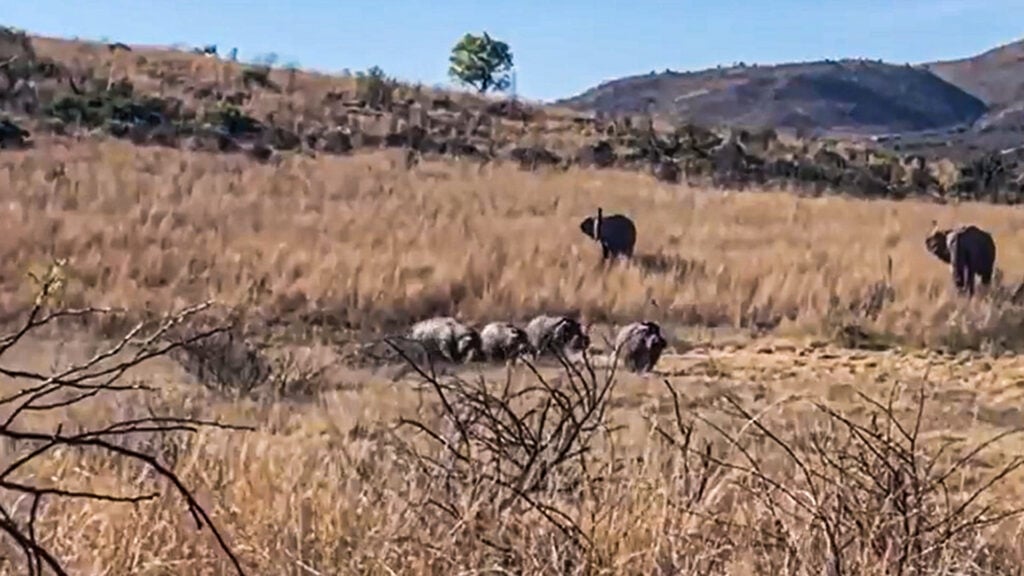
As the elephants get closer, it becomes apparent that they are aware of something up ahead. The elephant on the left can be seen raising its trunk as it sniffs the air.
Hippos start to move off
Meanwhile, the hippos have seen the elephants approaching, and as the elephant raises its trunk, they start to move away.
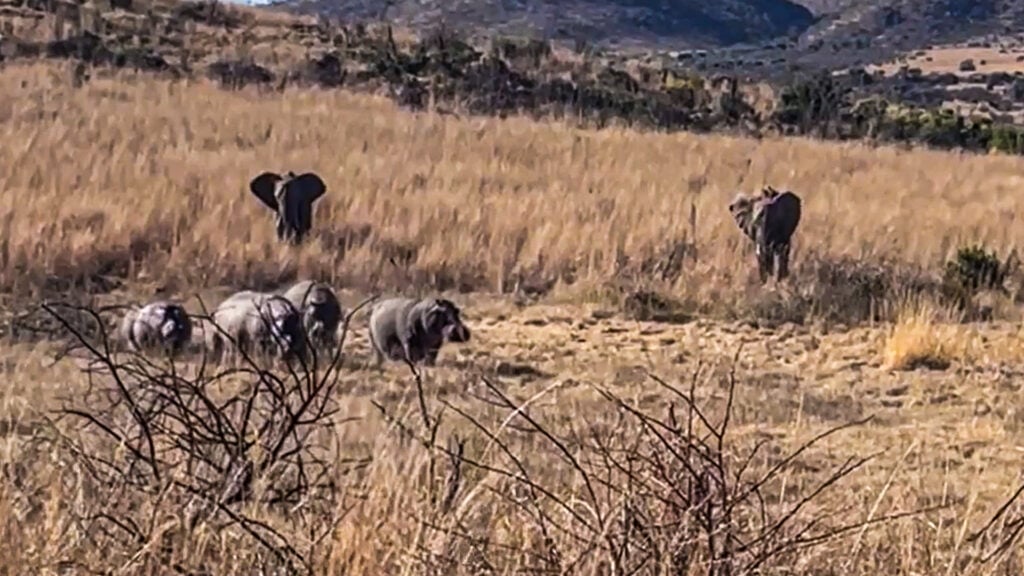
Note how the elephant on the left has spread its ears. This suggests that the elephant is alert to the possibility of danger ahead.
Better safe than sorry
By spreading its ears, it focuses its hearing forward to track the perceived threat. Additionally, it makes the elephant look bigger and more intimidating.
Elephants have relatively poor eyesight, thought only to be effective up to a range of 7-10 metres (20-30 feet). As such, while they may see movement, these elephants are initially too far to identify the hippos.

Meanwhile, as the elephants close in on the retreating hippos, the posture of the other elephant becomes more alert. Now it too starts walking directly at the hippos, flaring its ears as it does.
Orderly retreat
Subsequently, while the hippos continue to give way to the larger elephants, they do so in a generally orderly fashion. Only the smaller calf seems somewhat anxious.
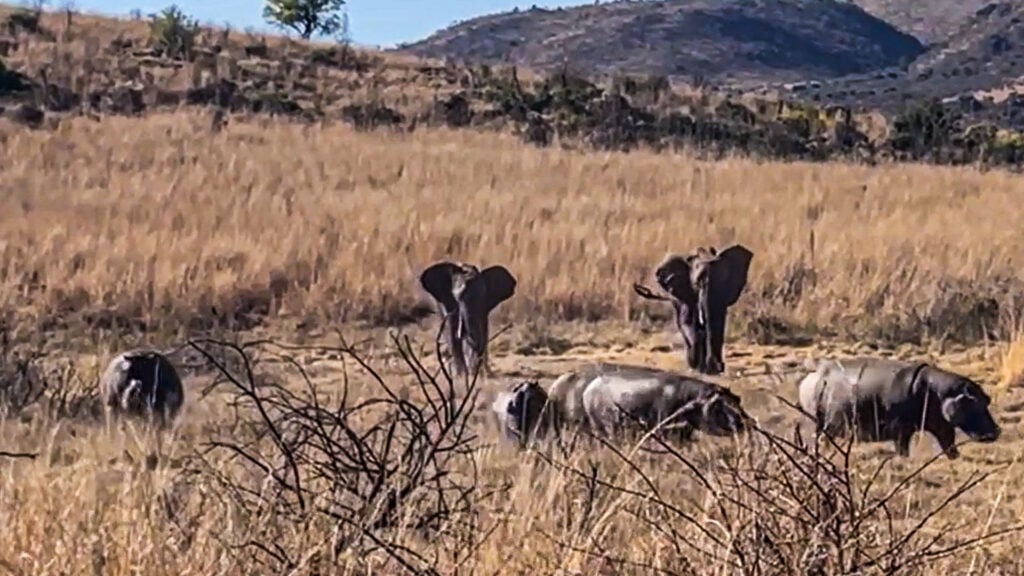
The elephants appear dissatisfied with the pace of the hippos’ retreat. Consequently, they pick up their pace, with one of them trumpeting a warning.
Time to go
At this, the hippos immediately pick up their pace, looking to keep a comfortable distance from the belligerent elephants.
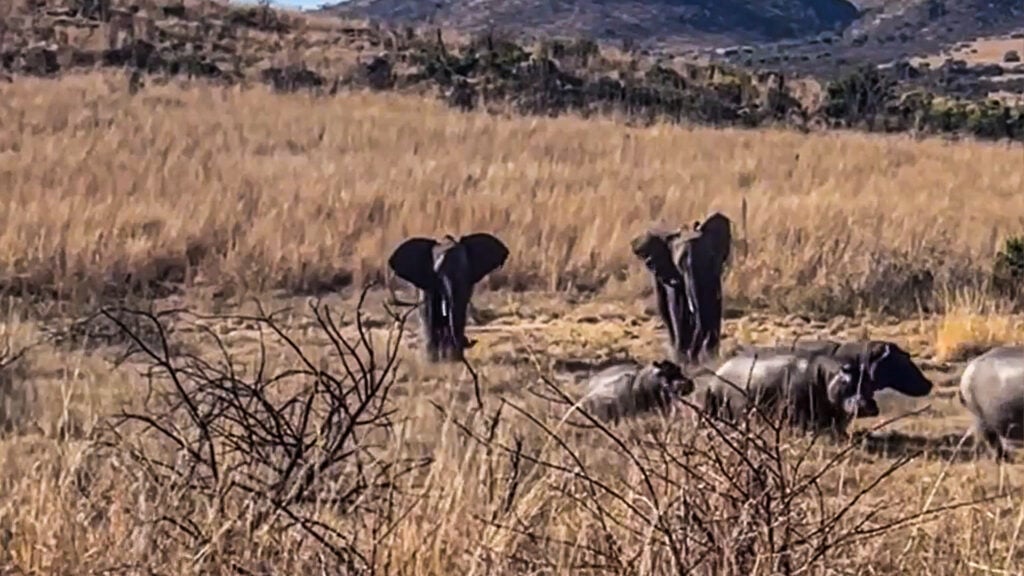
As if encouraged by the hippos’ flight, the elephants press home their display of dominance. A combination of increased pace, aggressive posturing, and trumpeting prompts the hippos to break into a run as they flee.
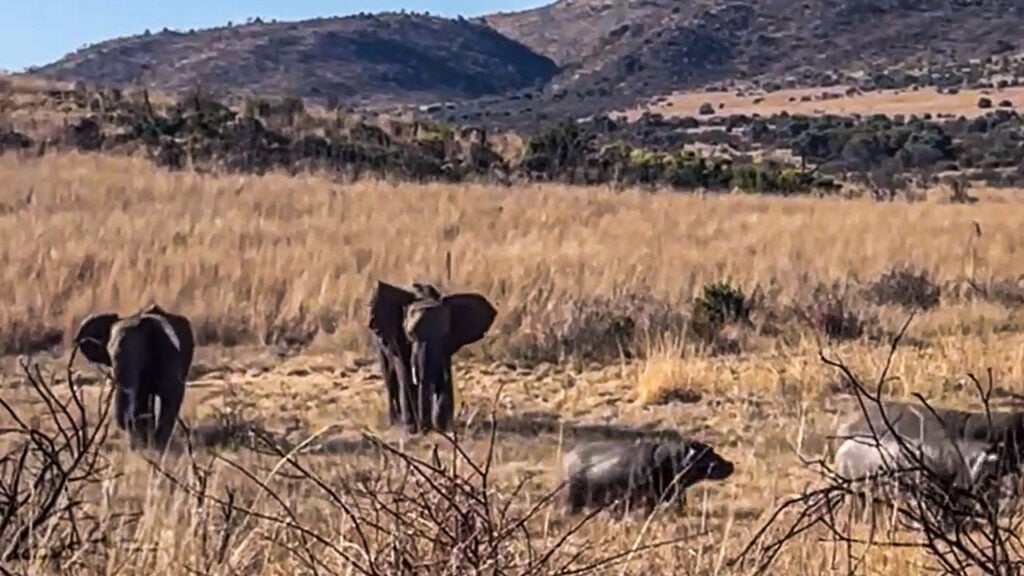
Still, the elephants continue to follow the hippos, seemingly not content to have driven them off. According to Zane’s account, the hippos ran back to the dam, where they finally found refuge from the unprovoked bullying.
Unfortunately, we don’t get to see what happened next.
Get our Best Sightings as they Come in
Playful bullies
In encounters like this, it can be difficult to accurately explain why the elephants behaved in the way that they did. After all, the hippos were grazing peacefully and immediately made way as the elephants got closer.
Furthermore, they continued to retreat throughout the sighting, even picking up their pace when the elephants escalated their threatening behaviour.
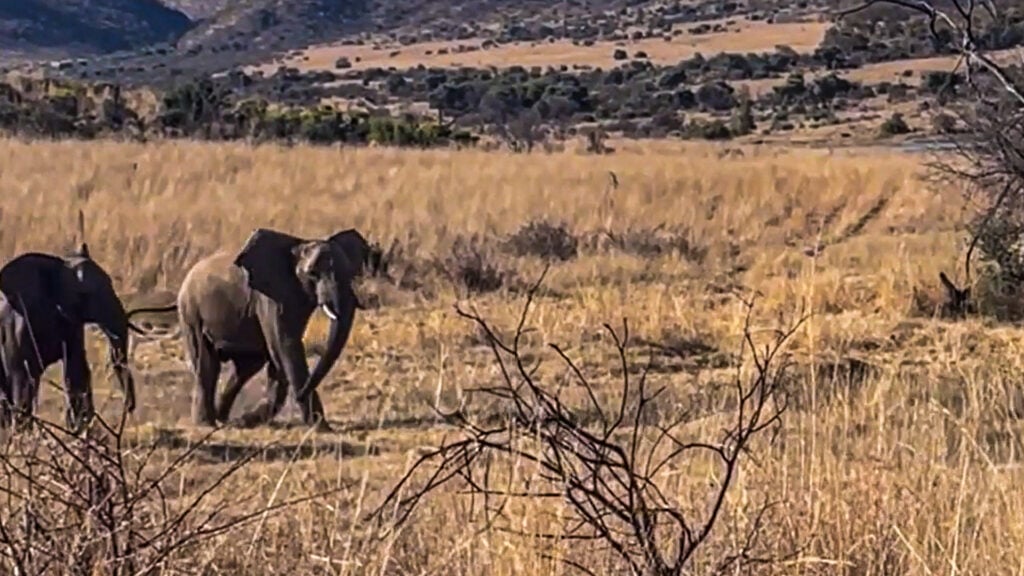
Both elephants appear to be fairly young males, judging by their relatively short and thin tusks. Male elephants generally leave their natal herd between 10-20 years of age, which coincides with puberty.
At this time, they are effectively learning to live independently of their mothers. As such, they are learning their place in their environment, which sometimes involves testing their dominance over other species.
Additionally, while their behaviour is mildly aggressive, they are almost playful in their pursuit. In essence, they are responding to the hippos’ retreat, as opposed to violently enforcing it.
